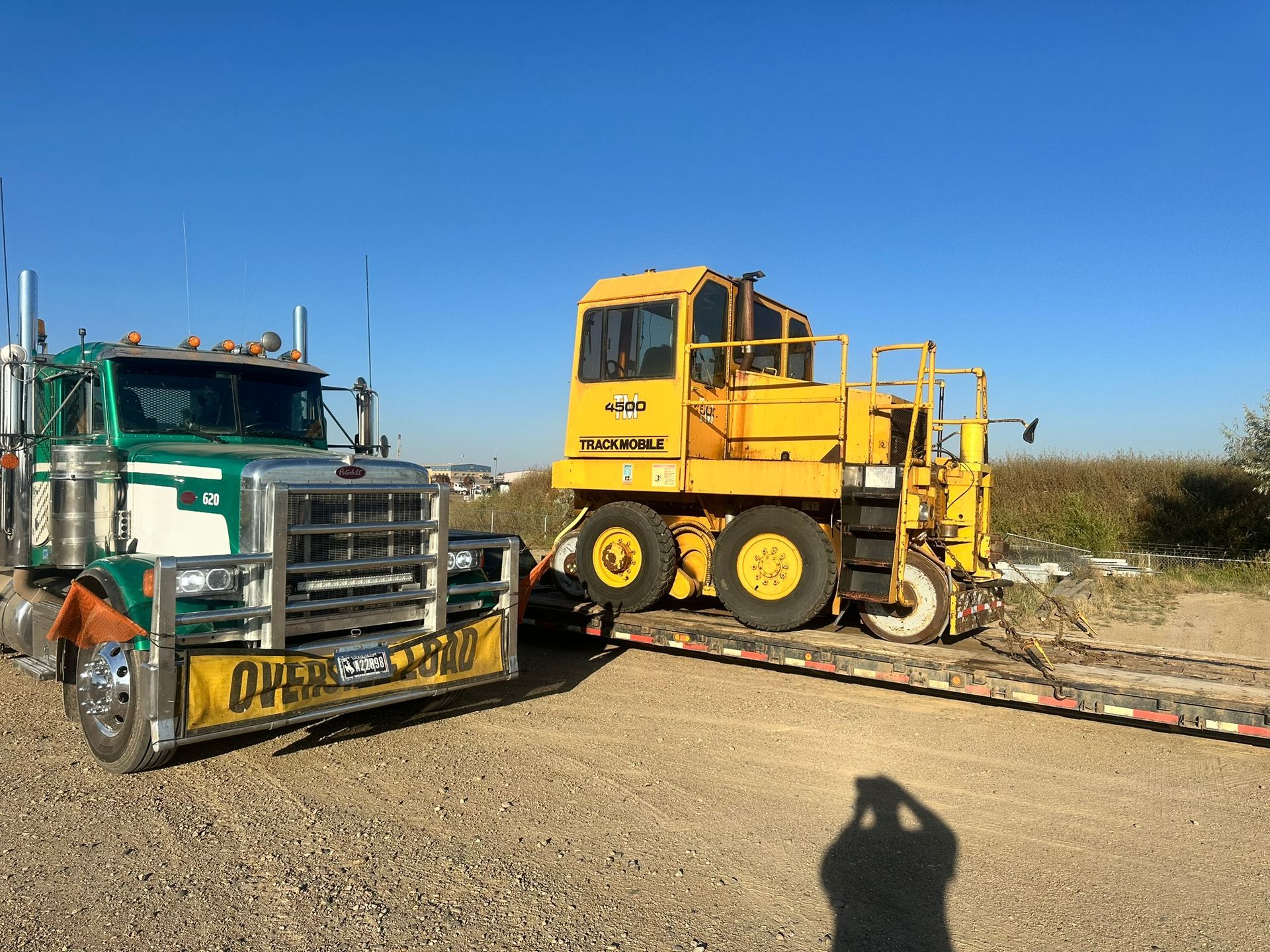Why We Love Working on Long-Nose Trucks

More room. Better ride. Timeless design.
At Xtreme Pro Services, we work on just about everything — from rail movers and telehandlers to heavy trucks and semis. But when it comes to truck work, we’ll admit it — we’ve got a soft spot for the long-nose rigs.
There’s just something about opening the hood on a Kenworth W900 or W990, or a Peterbilt 359, 379, 389, or the new 589, that makes the job more enjoyable.
They’re built the old-school way — with room to work, smooth road manners, and that unmistakable look that never goes out of style.
1. Room to Work — Easier In-Frames and Maintenance
The biggest reason we love long-nose trucks is simple: space.
When you’re doing an in-frame rebuild, replacing injectors, or pulling a turbo, every inch of clearance matters.
On most long-hood models like the Kenworth W990 or Peterbilt 389, you can actually see and reach what you’re working on — which means less time fighting tight spaces and more time doing precise, clean work.
Extra space means:
- Less risk of pinched wiring or crushed fittings
- Easier cooling-system service
- Better routing for fuel and air lines
- Quicker access to belts, fans, and alternators
When we’re rebuilding a Cummins X15, CAT C15, or Detroit Series 60, that room around the block saves hours of labor — and keeps knuckles intact.
2. The Classic Look That Still Turns Heads
The long-nose truck has always been the face of American trucking — big chrome grille, tall stacks, and that proud stance stretching out front.
From the legendary Peterbilt 359 of the ’60s to today’s 589, the heritage has stayed alive.
The 379 and 389 became icons of the open road, and now the 589 carries that same tradition with modern comfort and electronics.
On the Kenworth side, the W900L and W990 keep that long-hood spirit going strong — proving that classic design still has a place in a modern fleet.
Every one that rolls into our shop was built by someone who cares. They’re not just work tools — they’re pride, craftsmanship, and identity on wheels.
3. Built for Longevity and Ride Quality
Longer wheelbases and conventional hoods don’t just look good — they ride better.
That extra frame length smooths out rough highways and spreads the weight more evenly, which helps the drivetrain and suspension last longer.
From a service standpoint, we see fewer vibration-related failures on these trucks. Cracked brackets, rubbed harnesses, and loose mounts are far less common compared to shorter wheelbase aero trucks.
Most long-hoods are owner-operator spec’d, which means higher-quality components, cleaner wiring, and better access points.
That makes preventive maintenance (PM) more effective and major repairs more predictable.
4. Easier Customization and Component Replacement
Because these trucks have shared design roots for decades, parts availability and interchangeability are excellent.
Whether you’re working on a Peterbilt 379 with a CAT C15 or a Kenworth W990 with a Cummins X15, you can count on consistent layouts and service access.
That modular, open-bay design lets us:
- Drop radiators, coolers, and fans with minimal teardown
- Replace turbos and manifolds quickly
- Route wiring and hoses neatly for long-term reliability
It’s one reason we can perform faster, cleaner repairs — and deliver better results for our customers.
5. They Just Ride and Feel Right
Ask anyone who’s spent time behind the wheel of a Peterbilt 389 or Kenworth W900L — they’ll tell you there’s nothing else like it.
The steering feels planted, the ride is smoother, and the cab has that quiet, confident feel you only get from a long-hood truck.
We hear it all the time from drivers:
“I’ll never go back to a short-nose fleet truck again.”
And honestly? We get it.
Long-nose trucks have soul — they’re the kind of machines people form a connection with.
They represent craftsmanship, pride, and the golden era of trucking — still alive and rolling strong.
The Bottom Line
Long-hood trucks might not win the fuel-efficiency race, but they make up for it in ride quality, serviceability, and timeless appeal.
That said, we’ve found that with proper ECM tuning, optimized fuel mapping, and smart airflow and exhaust modifications, you can often get very close to the MPG of newer aero trucks — without losing that classic long-nose look or performance.
A well-maintained engine and properly calibrated ECM can easily save a half-mile to a full mile per gallon, especially on long hauls.
For us at XPS, they’re not just easier to work on — they’re a reminder of why we do this job in the first place: to keep well-built machines running for the people who care about them.
Whether it’s a Kenworth W990, W900L, or a Peterbilt 359, 379, 389, or 589, we treat each one with the same respect — detailed inspection, precise workmanship, and a commitment to doing the job right.
Trust the Team That Knows What These Trucks Deserve
701-987-9877
xtremepro.services
Serving Williston • Tioga • Watford City • Sidney • Minot
Xtreme Pro Services — where craftsmanship meets the classics.